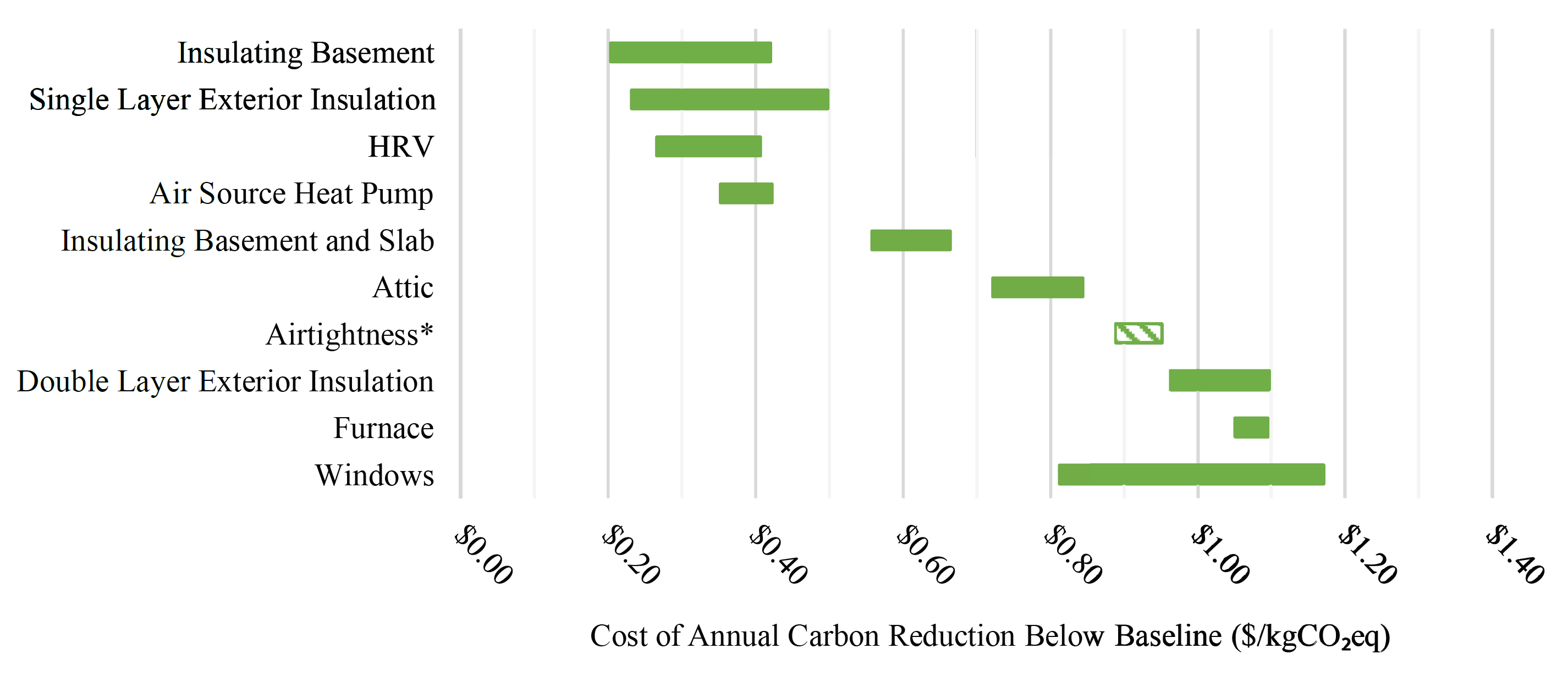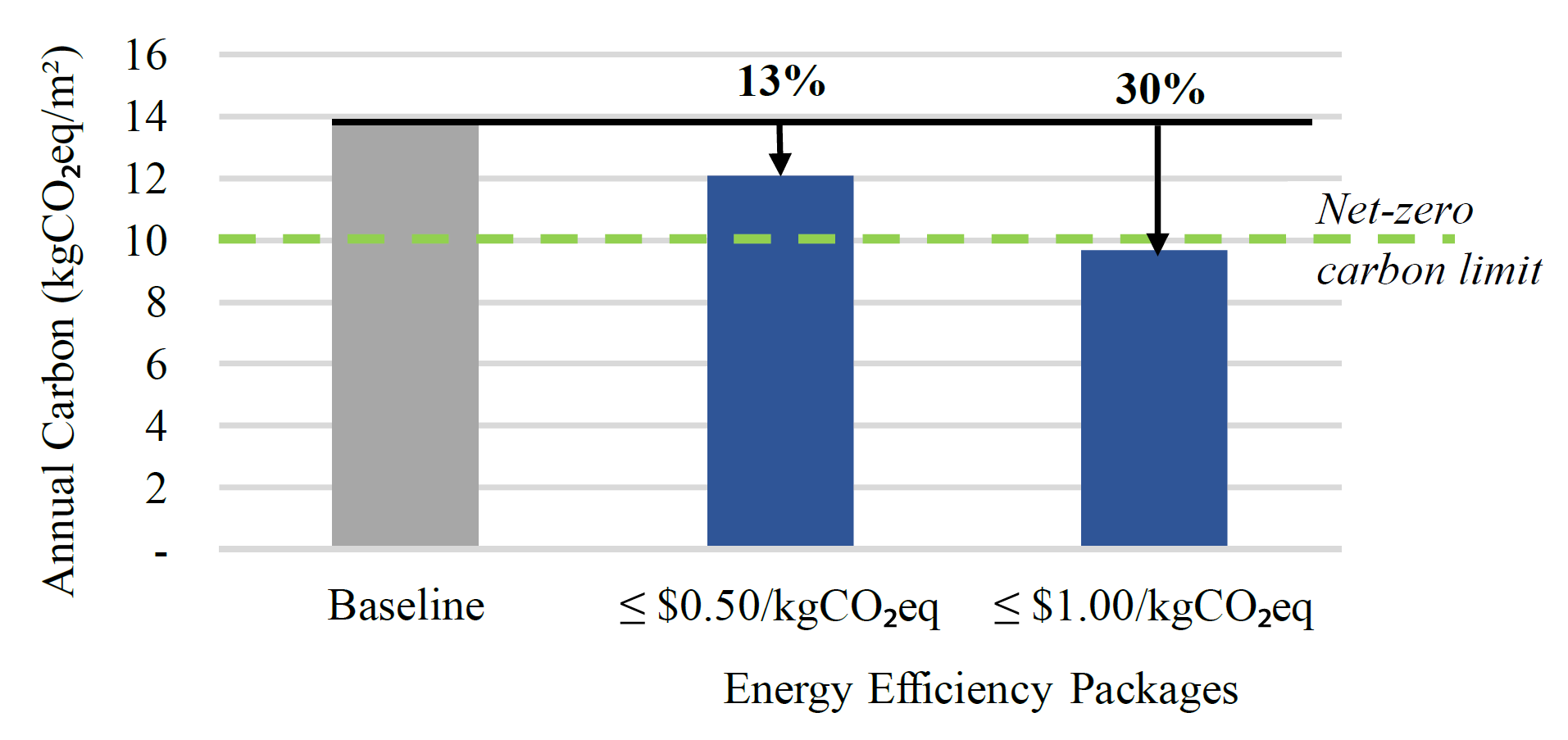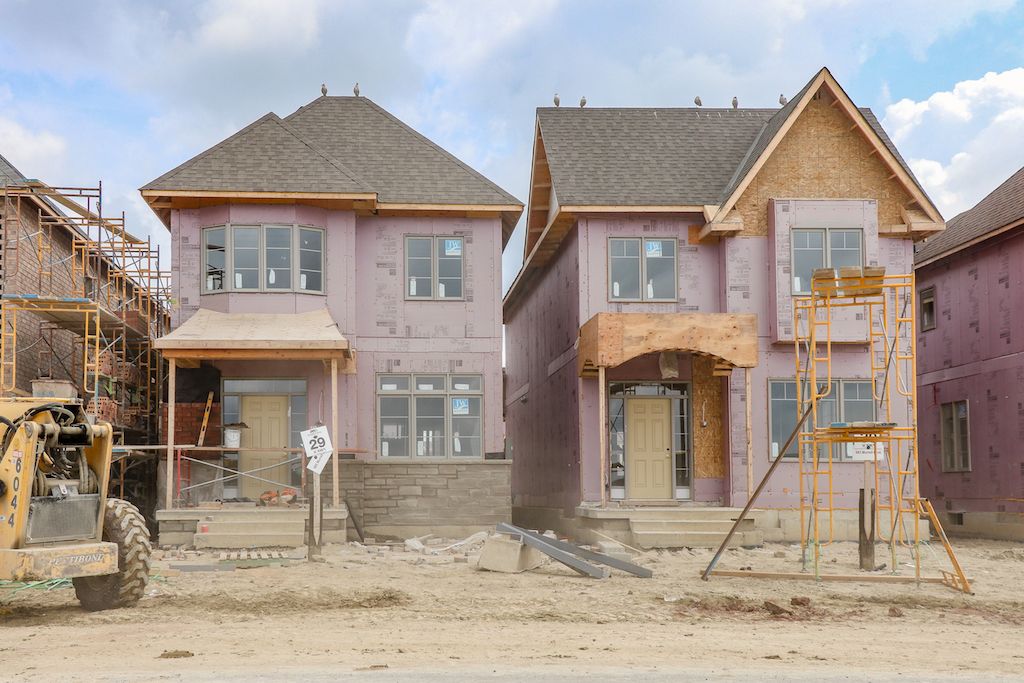Achieving a Low Carbon Housing Stock: An Analysis of Low-rise Residential Carbon Reduction Measures for New Construction in Ontario
This study examined the effectiveness of several low-carbon technologies to assess their applicability for high performance single-family housing construction.
Status: Completed
Research themes: Energy and GHG emissions
Research areas: Enclosure and building materials performance characterization
Project Objective
The Province of Ontario, as well as local jurisdictions such as the City of Toronto, have set ambitious targets for carbon reduction in the building sector. Since residential housing accounts for a major portion of Ontario’s building stock, improving design and construction of this building type is critical for meeting these targets. This study demonstrated how houses can reach net-zero carbon performance by optimizing key components in the building envelope and mechanical system.
Approach
HOT2000, an energy model designed for homes, was used to model a typical two-storey single-detached house in Ontario compliant with a prescriptive package from the 2017 edition of the Supplementary Standard SB-12 Energy Efficiency for Housing. Two major categories of modifications were considered for energy conservation: building envelope, and mechanical system. Several conservation measures were identified for both systems and were incrementally improved to measure the impact on overall energy consumption, and by extension, carbon emissions
Findings
Net-zero carbon houses can be achieved using existing technology and combining improvements to both envelope and mechanical systems proved to be the most impactful. We recommend the following policy decisions be considered by the province:
→ Change the building code to prioritize the most effective reduction measures, especially those not easily changed in retrofits such as envelope upgrades;
→ Develop incentive and rebate programs for the most cost-effective retrofit-friendly parameters; and
→ Implement a monitoring program, such as a small-scale study of new net-zero carbon homes, to ensure carbon targets are being met and policies are being developed appropriately.
Publications
Journal Publications
Ismailos, C., Touchie, M.F. “Achieving a low carbon housing stock: An analysis of low-rise residential carbon reduction measures for new construction in Ontario,” Building and Environment 126 (2017) pp. 176-183. doi:10.1016/j.buildenv.2017.09.034




